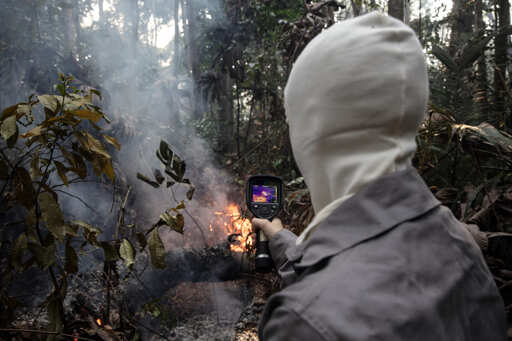In September 2024, biologist Cássio Alencar Nunes was taken aback while heading out for field research in Jaú National Park, a conservation unit in Brazil’s northern state of Amazonas. He had a plan to record bird vocalization samples to estimate the size of certain species’ populations. Early in the morning, alongside his colleagues, Nunes was already at the heart of the park with recorders in hand. However, instead of hearing the usual noise of the forest at dawn, what researchers found was nothing but silence. No birds, no insects. All quiet. When measuring the local temperature, the scientist found readings above 30° Celsius (86° Fahrenheit), which is very unusual for that time of the day (normally, he would expect between 24°C and 25°C, or 75-77°F). “We were alarmed,” Nunes said. “[The forest] was very quiet, really different. Animals must have been really stressed by that heat and drought.” According to the expert, everything was as quiet as it usually is at midday, when the scalding, stifling air makes animals hide to save energy. In the morning, on the contrary, one would expect a symphony. Not on those days. Birds were strangely silent in Jaú National Park in early September last year, when the Amazon was experiencing extreme drought. Image courtesy Jarilson Garcia Vilar/Agência Pública. The researcher had planned last year’s expedition for mid-September, expecting the dry season in that region to be ending with the arrival of the first rains. This, he believed, would make local bird species more active…This article was originally published on Mongabay
From Conservation news via this RSS feed


